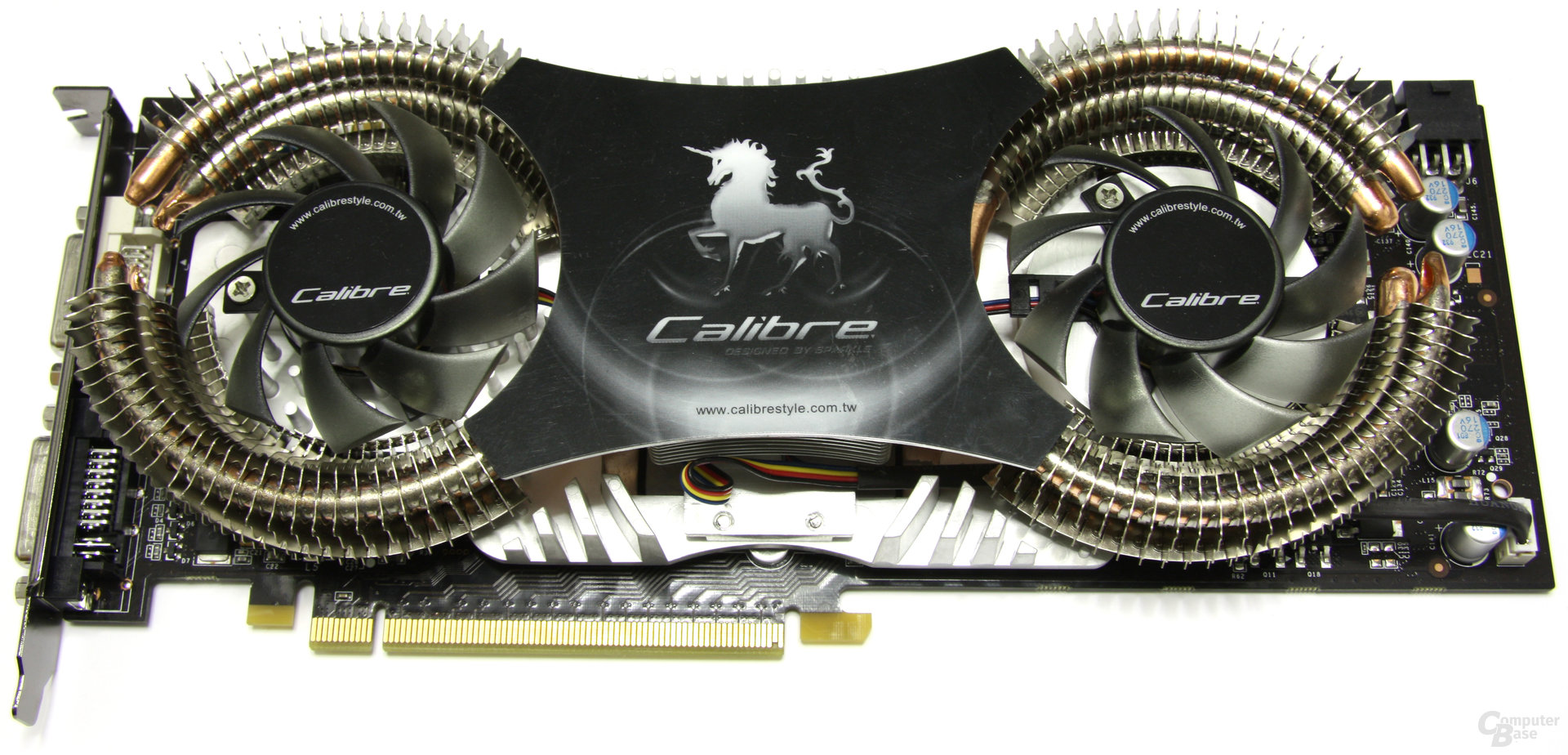
Fifteen years ago, the manufacturer Sparkle tried to convince users to use a GeForce GTX 260 card called Caliber.
Nothing but the chip looks like the GeForce GTX 260.
With the Caliber X265, Sparkle made it their mission to leave nothing out. So the graphics card’s PCB was entirely in-house. To power the 26cm graphics card, two 6-pin PCIe connectors had to be connected, which together with the PCIe slot provided up to 225W. The powerful dual-slot cooler was also developed in-house. This transferred the waste heat to several aluminum components via a copper cooling block on the GPU via four heatpipes. These were in turn supplied with fresh air by two 65mm axial fans.
When it came to clock speeds, the Sparkle delivered more than just the reference design — across the board. Users had to manually switch between 2D and 3D operation, and thus clock speeds, using a program called “SPA Tune.” With the reference design, this happened automatically as usual. With 2D mode set, it was 400MHz on the TMU domain, 800MHz on the shader units, and 300MHz on the 896MB GDDR3 memory. In the default 3D mode active, clock speeds were 666MHz on the TMU domain, 1476MHz on the shader units, and 1134MHz on the memory — a significant increase over the 576/1242/999MHz of the reference design.
More GeForce GTX 275 than GTX 260
In benchmarks, the Caliber X265 was also on par with AMD’s top single-GPU model, the ATi Radeon HD 4890. An extra ten percent of performance in the test can be achieved by overclocking, but this varies between models. In terms of sound pressure levels, the Caliber X265 made a very good impression at idle, but was 26 percent louder than the reference design under load. Despite this relatively large size and large cooling system, the GPU temperature under load was 11 K higher than it was in the reference design. Power consumption for the entire system was similarly worrisome, with the Caliber
Conclusion
Overall, the Sparkle Caliber X265 elicited mixed feelings. The manufacturer has gone to great lengths to develop the graphics card from the ground up. In this case, everything new does not mean everything was better. In addition to the extra size and power consumption, the manual switching between 2D and 3D clock rates was a knockout standard. It is difficult to make the graphics card design more complicated for users.
In the “In Testing 15 Years Ago” category, the editorial team has been taking a look at the Testing archive every Saturday since July 2017. We list the last 20 articles that appeared in this series below:
More content of this type and many other reports and stories can be found in the old corner of the ComputerBase forum.

“Social media evangelist. Baconaholic. Devoted reader. Twitter scholar. Avid coffee trailblazer.”








More Stories
Longest jets in the universe discovered – giant particle streams as long as 140 Milky Way galaxies in a row
New method reveals 307 supernova remnants
Snapchat is upping the ante on augmented reality glasses